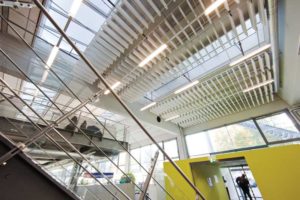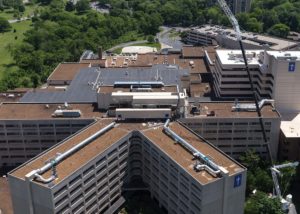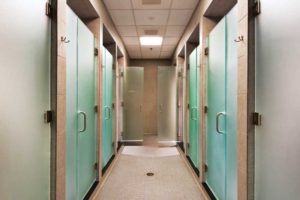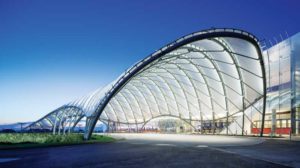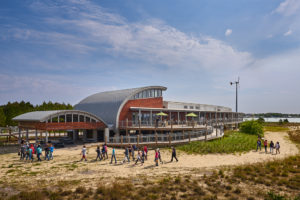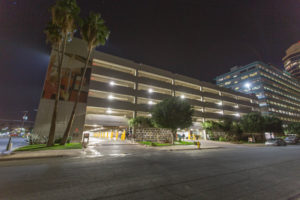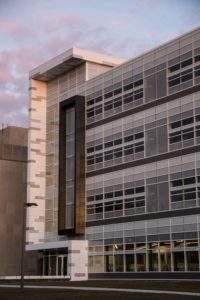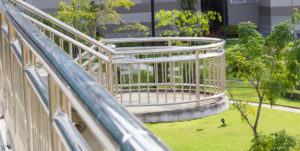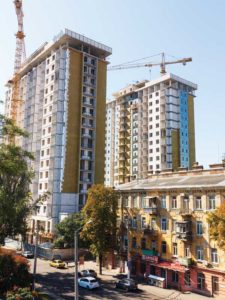When some people consider sustainable buildings, they think of wood from a certified forest, whether carpeting was used, or if harvested rainwater was employed for landscaping. Others may think of energy efficiency, solar panels, and daylighting to reduce electric light usage.
+ Read More
|
What do you do when there’s no room to retrofit an HVAC exhaust air system inside a building? Take it outside and hide it behind architectural accoutrement. That’s the solution implemented at Saint Thomas West Hospital in Nashville.
+ Read More
|
For nearly 20 years, the U.S. design and construction community has largely focused on single-dimension green attributes of building materials. Most practitioners, with hurried schedules and product specifications up to their eyeballs, look for two primary green features—recycled content and low-emitting materials. However, that is now changing.
+ Read More
|
Upgrading older facilities with modern restroom fixtures and amenities can update much-needed aesthetics, maintenance, and safety reliefs. Designing with accessibility in mind can do more than provide easier-to-use spaces for the elderly and disabled—it provides comfort for everyone.
+ Read More
|
Tensile structures have been used for millennia. When indigenous peoples required shelter that was lightweight and structurally sound, fabrics made from animal hides and easily transportable elements were the most viable solution. At the Roman Colosseum, a retractable Velarium provided shading for a more comfortable spectator experience.
+ Read More
|
Designed by SmithGroupJJR, the Chesapeake Bay Foundation’s (CBF’s) Brock Environmental Center has earned Living Building Challenge (LBC) certification from the International Living Future Institute (ILFI). It produces 1.83 times more energy than it used over the past year.
+ Read More
|
U-Haul employees working out of its corporate headquarters in Phoenix, Arizona, can now park their cars in a well-lit and energy-efficient garage, thanks to light-emitting diodes (LEDs).
+ Read More
|
Melding aesthetics with performance was top of mind in the design of Michigan State University’s (MSU’s) new Bio Engineering Facility. The four-story, 12,077-m2 (130,000-sf) research laboratory building features proprietary resins comprising 70 percent PVDF that meet or exceed AAMA 2605.
+ Read More
|
Stainless steel is often used as a railing material, especially where corrosion resistance is a major concern. However, many design/construction professionals may be unaware of the finer nuances of selecting the right type of material. Having a better understanding of finishes is critical.
+ Read More
|
The long-term performance of any exterior building enclosure assembly is directly related to the level of planning implemented during the initial phases of the design process. It requires the combined efforts of the owner, building enclosure commissioning provider (BECxP), design team, and contractors.
+ Read More
|
|
|


